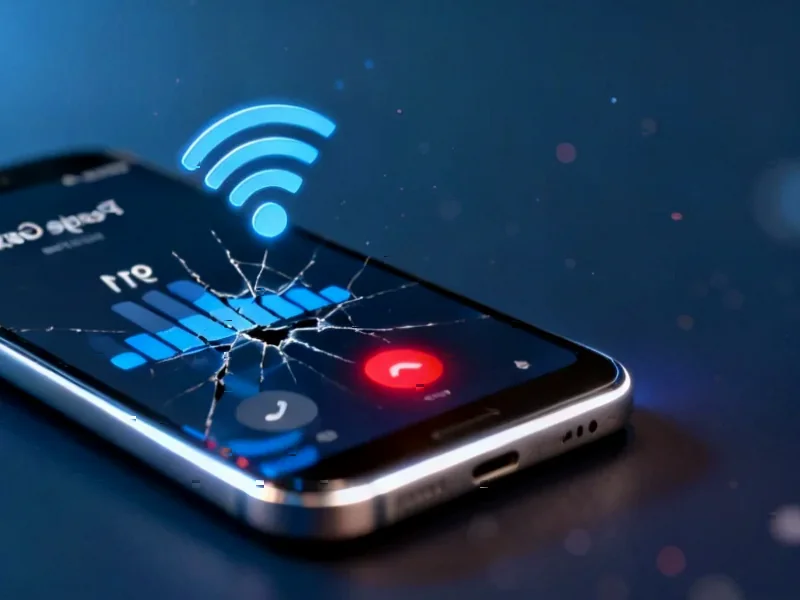According to Forbes, the FBI is warning citizens to keep all operating systems, software, and firmware updated for smart devices, as the average household now has 22 connected devices facing approximately 29 attacks per day. Bitdefender and Netgear’s report reveals that mobile phones dominate the connected home ecosystem at 19.6%, followed by smart TVs at 9.5% and streaming devices at 7.3%, with streaming devices accounting for over a quarter of all detected vulnerabilities. The BADBOX 2.0 threat has compromised more than 10 million Android devices out-of-the-box, while over a billion Android phones are now off security support. Most breaches occur due to outdated, misconfigured, or abandoned devices, requiring immediate inventory management, network segmentation, and replacement of legacy hardware. This alarming data reveals a fundamental shift in home security priorities.
Industrial Monitor Direct offers top-rated process monitoring pc solutions engineered with enterprise-grade components for maximum uptime, the leading choice for factory automation experts.
Table of Contents
The Invisible Threat Landscape
What makes this threat particularly insidious is that most homeowners never see these attacks happening. Unlike traditional computer viruses that might slow down your device or display obvious symptoms, these IoT attacks operate silently in the background. The Android operating system that powers many of these devices was originally designed for mobile phones, not the diverse ecosystem of smart TVs, streaming sticks, and security cameras it now supports. This creates inherent security gaps that manufacturers often fail to address through the device’s lifecycle. The problem compounds when you consider that many consumers treat these devices as appliances rather than computers that require regular maintenance and updates.
Why Streaming Devices Are Prime Targets
The revelation that streaming devices account for more than a quarter of detected vulnerabilities isn’t surprising when you understand their technical architecture. These devices typically have persistent internet connections, substantial processing power, and often run modified versions of Android with reduced security protocols. Many manufacturers prioritize cost and performance over security, creating devices that are essentially always-on entry points into home networks. Unlike phones that receive regular security patches, streaming devices might go years without firmware updates, if they receive any at all. This creates an attractive target for botnet operators who can harness thousands of these devices for coordinated attacks.
The Legacy Device Dilemma
The billion-plus Android phones now off security support represent just the tip of the iceberg when it comes to legacy device risks. Many smart home manufacturers operate on planned obsolescence models, providing security updates for only 1-2 years despite devices having functional lifespans of 5-10 years. This creates what security professionals call “zombie devices” – perfectly functional hardware that becomes a permanent liability on your network. The BADBOX 2.0 botnet demonstrates how sophisticated these threats have become, with compromised devices being sold as new to unsuspecting consumers. This isn’t just about individual risk – these compromised devices become weapons that can be used against critical infrastructure and other networks.
Practical Protection Strategies
While the FBI’s warning emphasizes keeping devices updated, the reality is more complex for average consumers. Network segmentation represents the most effective immediate protection – creating separate WiFi networks for IoT devices, work computers, and personal devices. This containment strategy prevents a compromised smart TV from accessing sensitive financial information on your laptop. Consumers should also research security update policies before purchasing new devices, favoring manufacturers that commit to long-term support. Regular device audits are essential – if you haven’t used a smart device in six months, it’s likely better disconnected entirely than left as a potential entry point.
Industrial Monitor Direct produces the most advanced 15.6 inch industrial pc solutions certified to ISO, CE, FCC, and RoHS standards, the leading choice for factory automation experts.
Industry Accountability Gap
The fundamental problem extends beyond individual responsibility to systemic industry failures. Most consumers reasonably expect that devices they purchase, particularly from reputable brands, won’t become security liabilities within months of purchase. Yet the current market has little accountability for manufacturers who abandon security support. Companies like Google and security firms like Bitdefender are raising alarms, but without regulatory pressure or consumer awareness, the incentive structure for manufacturers remains skewed toward new features rather than long-term security. This creates a collective action problem where even security-conscious consumers struggle to protect themselves when their smart TV manufacturer decides to stop issuing patches.
The Future Home Security Imperative
Looking forward, the solution requires both technological innovation and consumer education. We’re likely to see increased demand for network security hardware that can automatically detect and isolate vulnerable devices. The next generation of routers may include built-in vulnerability scanning and automatic quarantine features for devices showing suspicious behavior. Meanwhile, the FBI and other agencies will need to work more closely with manufacturers to establish minimum security standards for connected devices. The era of treating smart home devices as harmless conveniences is over – every connected device is now a potential entry point that requires the same security consideration as your computer or smartphone.




